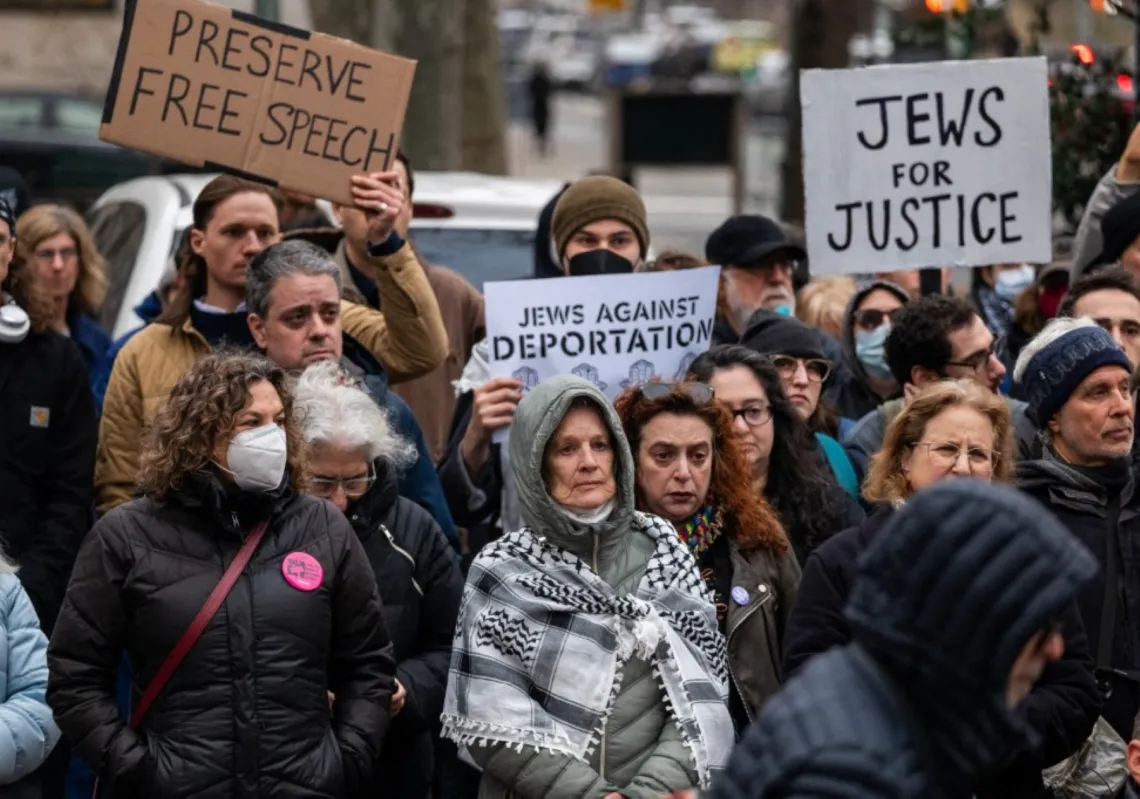Fears that Westminster terrorist Khalid Masood - the 52-year-old Muslim convert who killed five people and injured 50 in an attack on London's Westminster Bridge - was indoctrinated with extremism ideology during his time in jail has brought into sharp focus the long-standing concern about British prisons as a potent breeding ground for radicalization.
Masood was a ‘career criminal’, he served several prison sentences for offences ranging from grievous bodily harm, to assault and possession of an offensive weapon dating back to his teenage years. A childhood friend of his indicated that he converted to Islam while he was in Prison. “When he first came out he told me he’d become a Muslim in prison and I thought he was joking,” Mark Ashdown told The Sun. “Then I saw he was quieter and much more serious.”
Prisons as fruitful places for radicalisation and recruitment for Islamist extremists – or indeed any other kind of political extremism - is not a novel concept. Abu Qatada, a radical Muslim cleric who the British government fought for over a decade to deport and was often described as ‘Osama Bin Laden’s Ambassador to Europe’, talked about seeing “the signs of Allah” within British prisons. The pattern of radicalization in prisons has been repeated around the world throughout history and among supporters of ISIS in Europe more recently, including the terrorists behind the Brussels and Paris attacks. A report by the British think tank, the International Centre for the Study of Radicalisation and Political Violence (ICSR), which examined the profiles of European jihadists since 2011, said that prisons provide a ready supply of 'angry young men' who are 'ripe' for radicalization and recruitment by extremist inmates. Evidence collected by the Countering Violent Extremism research program from more than 100 case studies of lone-wolf terrorists further supports this trend.
In the UK, the number of Muslim prisoners overall has more than doubled over the past 14 years. In 2002 there were 5,502 Muslims in prison, by 2016 this had risen to 12,663. They now account for 15% of the prison population compared to 5.4% of the general UK population. These statistics demonstrate that there is an increasing and disproportionate representation of Muslims within the criminal justice system which could “chime with the radicalizers’ message of the victimization of Muslims,” according to a review of Islamist extremism in prisons published in August 2016 by the Ministry of Justice.
Latest official data shows that as of 31 March 2017 there were 186 persons in custody in Great Britain for terrorism-related offences and domestic extremism/separatism, an increase of 15% on the 162 persons in custody during the previous year. These numbers indicate that the threat posed by these inmates who often manipulate other prisons by constructing an ‘us versus them’ mentality, relying on their heightened need for belonging and perceived sense of victimization, is growing rapidly.
Statistics also show that Muslim converts, like Khalid Masood, are more prone to radicalization. In Britain, converts make up less than 4% of Muslims but 12% of home-grown jihadists. Converts often lack moderate voices among friends and family and may have not developed a firm grounding in Islamic teachings which would allow them to draw a distinction between the Islamic faith and Islamist ideology. Consequently, they may not be properly equipped with the necessary tools to challenge the narrative propagated by hardened jihadis in prisons.
REVIEW OF ISLAMIST EXTREMISM IN PRISONS
Terrorist groups have traditionally attracted the elite and educated but this new crop of ISIS recruits come fully primed for violence with skills refined through their criminal past. Professor Peter Neumann, director of the ICSR at King’s College London, told The Independent, “A lot of analysts continue saying terrorists are middle or upper-class, Osama bin Laden was the son of a millionaire and the 9/11 attackers were students for instance, but I don’t think that reflects the reality we have with ISIS – we need to rethink our strategy.”
The transition to Islamist extremism is easier for those whom violence is already a way of life as it provides them with a moral validation for their actions. In his article published in The Times, the former prison governor Ian Acheson who led the government-ordered inquiry into Islamist extremism in imprisons, said that the “young men in our prisons are at risk of being indoctrinated by a warped ideology that mobilizes their capacity for violence and that, at the most extreme, provides them with theological permission to kill the unbeliever.”
According to the inquiry, the threat of radicalization in prisons manifests itself in various ways, including: Muslim gang culture and engineered segregation, charismatic extremist prisoners acting as self-styled ‘emirs’ and exerting a controlling and radicalising influence on the wider Muslim prison population, books and educational materials promoting extremist literature, intimidation of prison imams and the exploitation of staff fear of being labelled racist.
The findings of the landmark review prompted action by the government and new measures were introduced to tackle the growing problem. A 100-strong specialist team of counter-terrorism experts was launched to examine intelligence from around the country, assess the danger posed by radicalization behind bars, train personnel to deter offenders from being lured into extremism and advice management of dangerous and high profile extremists. Other measures taken include an instruction to governors to ban extremist literature and remove anyone from communal worship who is promoting anti-British beliefs or other dangerous views.
Under the government's plans the most dangerous and “charismatic” Islamist extremists acting as “self-styled emirs” will be removed from the general prison population and held in ‘specialist units’ in high security estates which have been described as “prisons within prisons”. This move has raised some concerns that segregation could have unintended consequences. Some are wary that it could create a “colony of jihadists” whereas others like Steve Gillan of the Prison Officers Association (POA), predict that the “jihadi blocks” could create Britain’s own version of Guantanamo Bay. Referring to lessons learned in Northern Ireland, Gillan expressed concerns that these new measures would give extremists an “elevated status.”
“Some loyalist prisoners and some republican prisoners were segregated and what happened was that it gave them a political status. It didn’t work and in fact made the situation worse.” He explained.
However, Sheikh Salah al-Ansari, a Senior Researcher in the Theology and Outreach department of Quilliam, the world’s first counter-extremism organization, told Majalla that he welcomed the “very important measures” taken by the government and said that he believed segregation would not have a negative impact inside the prisons, “it is a good step as it diffuses the various elements of the radicalization process.”
“As they will be barred from influencing others, this would minimize or eradicate their work inside the prison at least,” he added.
Sheikh al-Ansari, who is also a lecturer in Islamic studies at Muslim College London, shed some light on a key area of government’s plans where improvements need to be made, “the recommendations mentioned the qualification requirements of Muslim chaplains and advised wide representation of various denominations of Islam but in my view this is not enough. The Muslim chaplain must study Islam in a wider British context and develop an understanding faithful to his religion and faithful to British values and human rights.” He also told Majalla that half of the 140 chaplains represent a “hard-line, anti-Western Deobandi interpretation.”
The magnitude of the problem of prison chaplaincy and the urgency in which it must be dealt with was revealed in a leaked Ministry of Justice report. According to The Times, the report revealed that extremist pamphlets and CDs were found in more than 10 British prisons. These materials were reportedly distributed by the appointed imams to the inmates. The report also highlighted that the minority of Muslim prison chaplains from other denominations felt “marginalized, bullied and intimidated” by the prominence of Deobandi teaching and that prisoners at more than one jail were encouraged by chaplains to fund raise for charities that had links to terrorism.
Following the London Bridge attacks Theresa May said that the UK public sector needed to be more robust in accurately identifying extremism in order to successfully stamp it out. How to do this adequately is a concern expressed by prison staff who say that they are unaware of how to identify and report suspected extremists and those at risk of radicalization. Sheikh al-Ansari explains that a deeper understanding of “the phenomenon of Islamism and salafi-jihadism and their narrative in addition to the understanding of how the process of radicalization works” along with regular training on the “developing and changing nature” of the issue is necessary to ensure accuracy.
On a broader note, al-Ansari clarified that to eradicate extremism from society a more “integrated and comprehensive approach to the phenomenon” is required. The toxic ideology which “hides between mainstream Muslims” must be identified and isolated so that it can be challenged and combated with a “counter-narrative online and offline, in the prison, communities, and universities,” he explains.
The current trends and the recent scrutiny of the government’s approach to the thousands of suspected terrorists following the recent terror attacks indicate that the number of prisoners guilty of offences relating to terrorism and extremism are likely to increase. Although new measures have been introduced and spending on dealing with this threat has increased, the overall prison budget has been cut by nearly £900 million between 2010 and 2015. This has resulted in 6000 fewer prison officers than there were in 2010 and could lead to adverse consequences particularly as staff shortages are already making it harder to tackle radicalization in prisons.









